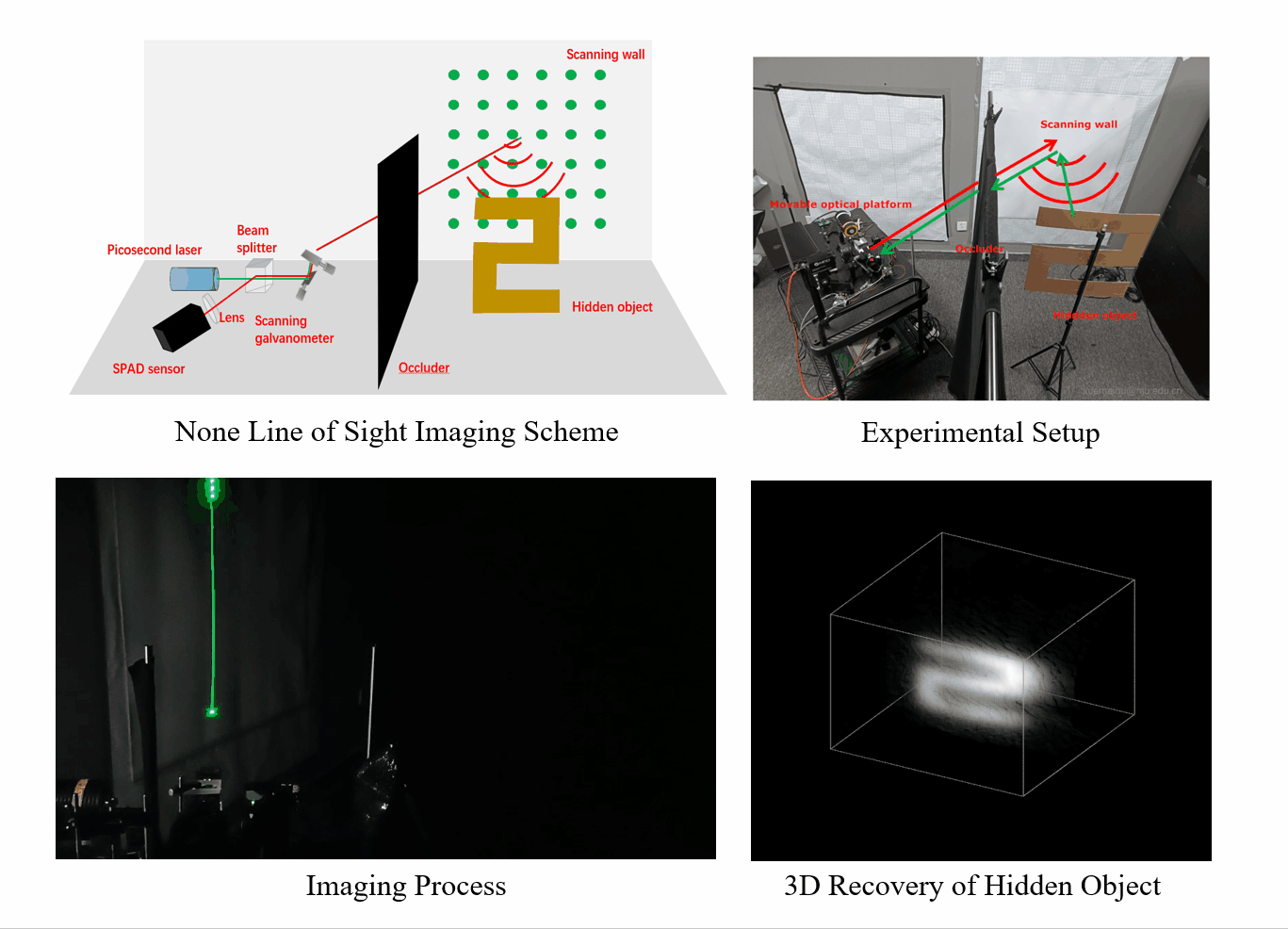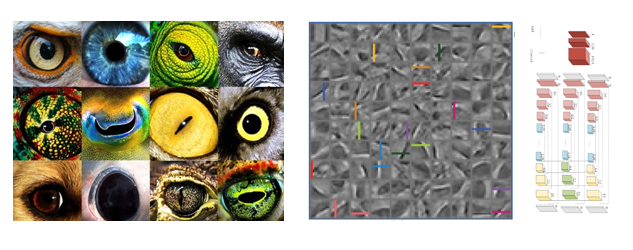
RESEARCH OVERVIEW

None-Line-of-Sight Imaging
None line of sight imaging is a type of imaging technique that could enable to see the scene
that is hidden outside the line of sight. Through extracting the information from the indirect
light that reflected multiple times between an intermediary surface and the hidden objects, the
properties of the NLOS scene could be revealed. Due to this appealing capability, NLOS
technology has aroused great research attention and is believed to have various and significant
applications in a wide range of applications, such as medical imaging, autonomous driving,
and robotic vision, etc. Our research focuses on developing practical NLOS imaging
techniques and algorithms that could deal with complex imaging scenarios both robustly and
accurately.

Ultra-Fast Imaging
Ultra-fast imaging technique is a type of video taking technique, and the time resolution ranges
from nanoseconds, picoseconds to femtoseconds, or even attoseconds. Due to the ability in
detecting light with ultra-high time resolution, ultrafast imaging has wide applications in
studying the transient phenomenon in chemistry, physics and biology. Our research focuses on
developing novel ultra-fast imaging techniques that could realize high-throughput continuous
ultrafast imaging, further enlarge the application range of ultra-fast imaging.

Ultra-Low Light Imaging
Ultra-low light imaging technique is a type of video taking technique under extremely low
light, i.e. the radiance of surrounding illumination ranges only from 0.1 lux, 0.01 lux, 0.001
lux, or even lower. Due to the ability in detecting light with extremely low light, ultra-low
imaging has wide applications in security, astronomy, and biology, etc. Our research focuses
on developing novel ultra-low imaging techniques and the corresponding reconstruction
algorithms that could realize extremely low light imaging

Intelligence Vision Systems
Biological vision systems could provide visual information efficiently for realizing elegant
daily tasks, with both low data throughput, computational complexity and low power
consumption. Inspired by the biological visual system, our research focuses on how to mimics
the biological visual systems, which could promote the imaging tasks with elegantly low cost.
Through further boosting the performance with deep learning, we aim to work even beyond
the capability of the biological vision system, which could greatly facilitate unmanned vehicles,
robotics, etc.
